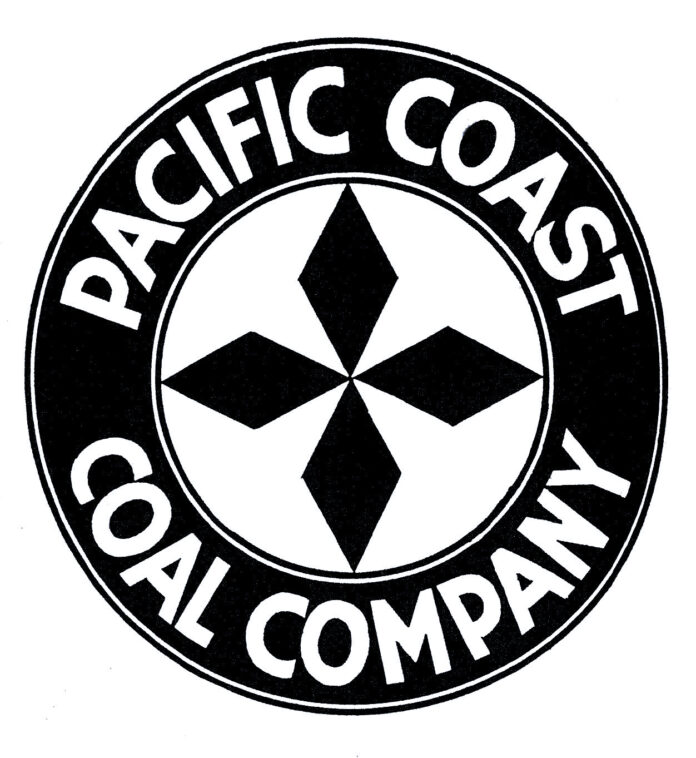This week marks the 500th column for When Coal Was King. One company stands out of nearly a quarter of the photos which have appeared – the Pacific Coast Company. Shown here is the new logo of their subsidiary, Pacific Coast Coal Company, circa 1927.
The complicated local history of the company, which helped steer the early development of King County, began with the opening of a mine and the town that grew up around it – Newcastle.
That event precipitated the establishment of a local railroad, the Seattle & Walla Walla. Other coal mines were opened in Black Diamond and Franklin, providing more transportation links.
Much of the mined coal was destined for California, necessitating a fleet of vessels and ships. However, to load and off-load coal required docks and wharves. With the backbone pieces in place, new mines were developed, company towns built, rail extended, wharves improved, and ships sent sailing.
From this tangle of interests, the Pacific Coast Company was born in 1897 and was comprised of subsidiaries operating coal mines, railroads, ships, wharves, docks, and eventually a cement division.
By 1916 their coal arm, Pacific Coast Coal owned seven mines with an annual capacity of one million tons. Two railroad subsidiaries controlled 225 miles of track to move coal, oil, and passengers. Pacific Coast Steamship maintained a sizable fleet of commodity and passenger vessels connecting an unbroken chain of ports stretching from San Diego to Nome, Alaska.
By the 1950s the component parts of this once great company were being sold off by its new chairman, Hugh Jacks, who assumed control in the late 1940s and saw potential tax benefits in the company’s books.







